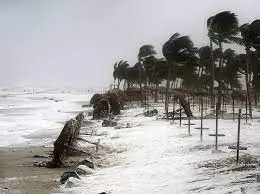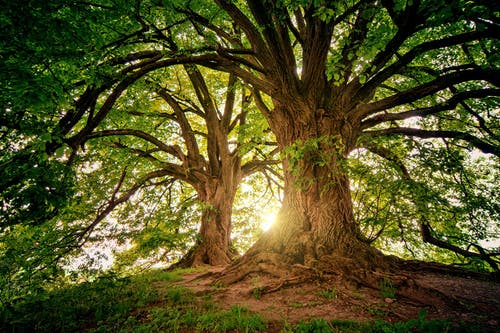Education

Education is a purposeful activity directed at achieving certain aims, such as transmitting knowledge or fostering skills and character traits. These aims may include the development of understanding, rationality, kindness, and honesty. Various researchers emphasize the role of critical thinking in order to distinguish education from indoctrination. Some theorists require that education results in an improvement of the student while others prefer a value-neutral definition of the term. In a slightly different sense, education may also refer, not to the process, but to the product of this process: the mental states and dispositions possessed by educated people. Education originated as the transmission of cultural heritage from one generation to the next. Today, educational goals increasingly encompass new ideas such as the liberation of learners, skills needed for modern society, empathy, and complex vocational skills. Types of education are commonly divided into formal, non-formal, and informal education. Formal education takes place in education and training institutions, is usually structured by curricular aims and objectives, and learning is typically guided by a teacher. In most regions, formal education is compulsory up to a certain age and commonly divided into educational stages such as kindergarten, primary school and secondary school. Nonformal education occurs as addition or alternative to formal education.[1] It may be structured according to educational arrangements, but in a more flexible manner, and usually takes place in community-based, workplace-based or civil society-based settings. Lastly, informal education occurs in daily life, in the family, any experience that has a formative effect on the way one thinks, feels, or acts may be considered educational, whether unintentional or intentional. In practice there is a continuum from the highly formalized to the highly informalized, and informal learning can occur in all three settings.[2] For instance, homeschooling can be classified as nonformal or informal, depending upon the structure.
festival

A festival is an event ordinarily celebrated by a community and centering on some characteristic aspect of that community and its religion or cultures. It is often marked as a local or national holiday, mela, or eid. A festival constitutes typical cases of glocalization, as well as the high culture-low culture interrelationship.[1] Next to religion and folklore, a significant origin is agricultural. Food is such a vital resource that many festivals are associated with harvest time. Religious commemoration and thanksgiving for good harvests are blended in events that take place in autumn, such as Halloween in the northern hemisphere and Easter in the southern. Festivals often serve to fulfill specific communal purposes, especially in regard to commemoration or thanking to the gods, goddesses or saints: they’re called patronal festivals. They may also provide entertainment, which was particularly important to local communities before the advent of mass-produced entertainment. Festivals that focus on cultural or ethnic topics also seek to inform community members of their traditions; the involvement of elders sharing stories and experience provides a means for unity among families. In Ancient Greece and Rome, festivals such as the Saturnalia were closely associated with social organisation and political processes as well as religion.
Cyclonic

Extremely Severe Cyclonic Storm Fani (/ˈfɒniː/)[a] was the worst tropical cyclone to strike the Indian state of Odisha since the 1999 Odisha cyclone. The second named storm and the first severe cyclonic storm of the 2019 North Indian Ocean cyclone season, Fani originated from a tropical depression that formed west of Sumatra in the Indian Ocean on 26 April. Vertical wind shear at first hindered the storm’s development, but conditions became more favorable for Fani on 30 April. Fani rapidly intensified into an extremely severe cyclonic storm and reached its peak intensity on 2 May, with 1-minute sustained winds equivalent to a Category 5 major hurricane. Fani slightly weakened before making its landfall, and its convective structure rapidly degraded thereafter, degenerating into a remnant low on 4 May, and dissipating on the next day. It was succeeded by Cyclone Amphan in 2020 which caused a greater overall damage. Prior to Fani’s landfall, authorities in India and Bangladesh moved at least a million people each from areas within Fani’s projected path onto higher ground, and into cyclone shelters, which is thought to have reduced the resultant death toll and casualties.[3] Fani killed at least 89 people in eastern India and Bangladesh and caused about US$8.1 billion in damages in both India and Bangladesh, mostly in Odisha, in India.
Democracy

Democracy (from Greek δημοκρατία (dēmokratía) dēmos ‘people’ and kratos ‘rule’[1]) is a form of government in which the people have the authority to deliberate and decide legislation (“direct democracy“), or to choose governing officials to do so (“representative democracy“). Who is considered part of “the people” and how authority is shared among or delegated by the people has changed over time and at different rates in different countries, but over time more and more of a democratic country’s inhabitants have generally been included. Cornerstones of democracy include freedom of assembly, association, property rights, freedom of religion and speech, inclusiveness and equality, citizenship, consent of the governed, voting rights, freedom from unwarranted governmental deprivation of the right to life and liberty, and minority rights. The notion of democracy has evolved over time considerably. The original form of democracy was a direct democracy. The most common form of democracy today is a representative democracy, where the people elect government officials to govern on their behalf such as in a parliamentary or presidential democracy.[2] Prevalent day-to-day decision making of democracies is the majority rule,[3][4] though other decision making approaches like supermajority and consensus have also been integral to democracies. They serve the crucial purpose of inclusiveness and broader legitimacy on sensitive issues—counterbalancing majoritarianism—and therefore mostly take precedence on a constitutional level. In the common variant of liberal democracy, the powers of the majority are exercised within the framework of a representative democracy, but the constitution limits the majority and protects the minority—usually through the enjoyment by all of certain individual rights, e.g. freedom of speech or freedom of association.[5][6] The term appeared in the 5th century BC to denote the political systems then existing in Greek city-states, notably Classical Athens, to mean “rule of the people”, in contrast to aristocracy (ἀριστοκρατία, aristokratía), meaning “rule of an elite”.[7] Western democracy, as distinct from that which existed in antiquity, is generally considered to have originated in city-states such as those in Classical Athens and the Roman Republic, where various schemes and degrees of enfranchisement of the free male population were observed before the form disappeared in the West at the beginning of late antiquity. In virtually all democratic governments throughout ancient and modern history, democratic citizenship consisted of an elite class until full enfranchisement was won for all adult citizens in most modern democracies through the suffrage movements of the 19th and 20th centuries. Democracy contrasts with forms of government where power is either held by an individual, as in autocratic systems like absolute monarchy, or where power is held by a small number of individuals, as in an oligarchy—oppositions inherited from ancient Greek philosophy.[8] Karl Popper defined democracy in contrast to dictatorship or tyranny, focusing on opportunities for the people to control their leaders and to oust them without the need for a revolution.[9] World public opinion strongly favors democratic systems of government
Global warming

Everything you wanted to know about our changing climate but were too afraid to ask.
you must need to grow

In botany, a tree is a perennial plant with an elongated stem, or trunk, usually supporting branches and leaves. In some usages, the definition of a tree may be narrower, including only woody plants with secondary growth, plants that are usable as lumber or plants above a specified height. In wider definitions, the taller palms, tree ferns, bananas, and bamboos are also trees. Trees are not a taxonomic group but include a variety of plant species that have independently evolved a trunk and branches as a way to tower above other plants to compete for sunlight. The majority of tree species are angiosperms or hardwoods; of the rest, many are gymnosperms or softwoods. Trees tend to be long-lived, some reaching several thousand years old. Trees have been in existence for 370 million years. It is estimated that there are some three trillion mature trees in the world. A tree typically has many secondary branches supported clear of the ground by the trunk. This trunk typically contains woody tissue for strength, and vascular tissue to carry materials from one part of the tree to another. For most trees it is surrounded by a layer of bark which serves as a protective barrier. Below the ground, the roots branch and spread out widely; they serve to anchor the tree and extract moisture and nutrients from the soil. Above ground, the branches divide into smaller branches and shoots. The shoots typically bear leaves, which capture light energy and convert it into sugars by photosynthesis, providing the food for the tree’s growth and development. Trees usually reproduce using seeds. Flowers and fruit may be present, but some trees, such as conifers, instead have pollen cones and seed cones. Palms, bananas, and bamboos also produce seeds, but tree ferns produce spores instead. Trees play a significant role in reducing erosion and moderating the climate. They remove carbon dioxide from the atmosphere and store large quantities of carbon in their tissues. Trees and forests provide a habitat for many species of animals and plants. Tropical rainforests are among the most biodiverse habitats in the world. Trees provide shade and shelter, timber for construction, fuel for cooking and heating, and fruit for food as well as having many other uses. In parts of the world, forests are shrinking as trees are cleared to increase the amount of land available for agriculture. Because of their longevity and usefulness, trees have always been revered, with sacred groves in various cultures, and they play a role in many of the world’s mythologies.






